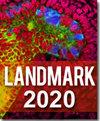Age estimation using tooth cementum annulations: bias and sources of inaccuracy.
IF 3.1
4区 生物学
Q2 Immunology and Microbiology
引用次数: 7
Abstract
BACKGROUND Counting the tooth cementum annulations (TCA) is a method for estimating the age at death of adults by sections of their tooth root. The objective of this study was to assess the precision of counting the cementum incremental lines and the congruence between known age and age estimates. Possible factors affecting the accuracy of the estimate were also analyzed. METHODS A sample of 67 permanent teeth extracted from individuals with known age (18-84 years) and sex was analyzed to calculate the dental age. RESULTS Results demonstrate an excellent inter- and intra-observer reliability of annuli counting, with dissimilarities within the limits of agreement. A moderate positive correlation was found between chronological age and TCA. Our results showed that age congruence rates differed across age groups (85% congruence in individuals ≤30 years; 75% in individuals aged 31-60 years; 60% in the over 60s). Considering the bias, this method showed a clear tendency to underestimate age in specimens from old people. After age 43, the TCA estimate is highly inaccurate exceeding the underestimation of 10 years, on average, in comparison to the chronological age. Both chronological age and dental arch seem to influence the accuracy of estimates, unlike sex and the tooth root number. CONCLUSIONS TCA analysis is characterized by high precision and low accuracy, decreasing with age. Therefore, its applicability is limited in elderly subjects. The choice of methods for age estimation in adult skeletal remains should take into account the particular age range of individuals. We recommend using different age estimation methods to verify the reliability of the performed assessments.用牙骨质环估计年龄:偏差和不准确的来源。
背景:牙骨质环数(TCA)是一种通过牙根切片估计成人死亡年龄的方法。本研究的目的是评估骨骨质增量线计数的精度以及已知年龄和年龄估计之间的一致性。对影响估计精度的可能因素进行了分析。方法对已知年龄(18 ~ 84岁)和性别的67颗恒牙进行分析,计算牙龄。结果表明,环空计数在观察者之间和观察者内部具有良好的可靠性,在一致的范围内存在差异。实足年龄与TCA之间存在中度正相关。我们的研究结果表明,年龄一致性率在不同年龄组之间存在差异(≤30岁的个体一致性为85%;在31-60岁人群中占75%;60岁以上的占60%)。考虑到偏差,该方法明显倾向于低估老年人标本的年龄。43岁以后,TCA的估计高度不准确,与实足年龄相比,平均低估了10岁。与性别和牙根数量不同,实际年龄和牙弓似乎都会影响估计的准确性。结论stca分析具有精密度高、准确度低、随年龄增长而降低的特点。因此,其在老年受试者中的适用性有限。成人骨骼遗骸年龄估计方法的选择应考虑到个体的特定年龄范围。我们建议使用不同的年龄估计方法来验证所进行评估的可靠性。
本文章由计算机程序翻译,如有差异,请以英文原文为准。
求助全文
约1分钟内获得全文
求助全文
来源期刊

Frontiers in Bioscience-Landmark
生物-生化与分子生物学
CiteScore
3.40
自引率
3.20%
发文量
301
审稿时长
3 months
期刊介绍:
FBL is an international peer-reviewed open access journal of biological and medical science. FBL publishes state of the art advances in any discipline in the area of biology and medicine, including biochemistry and molecular biology, parasitology, virology, immunology, epidemiology, microbiology, entomology, botany, agronomy, as well as basic medicine, preventive medicine, bioinformatics and other related topics.
 求助内容:
求助内容: 应助结果提醒方式:
应助结果提醒方式:


